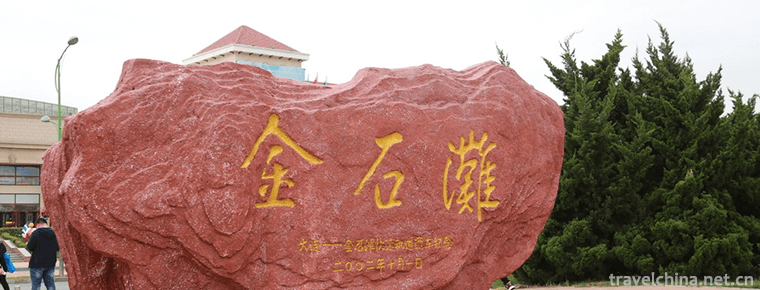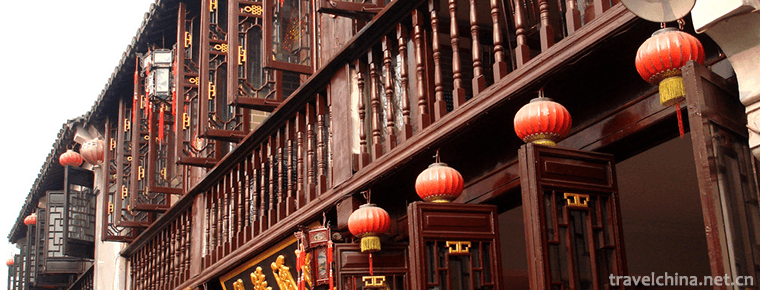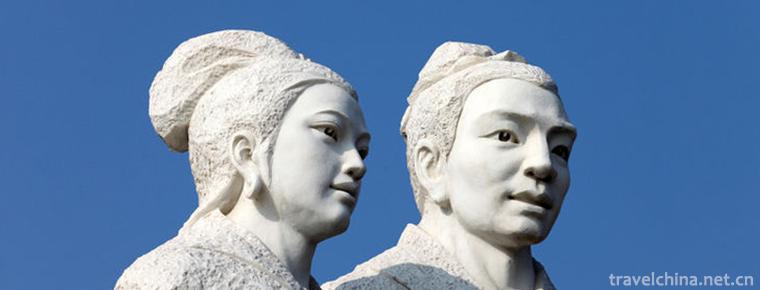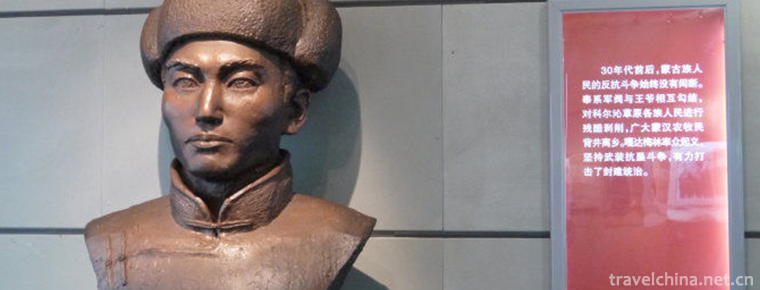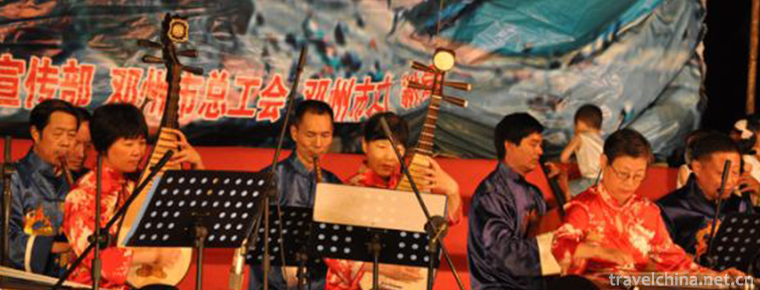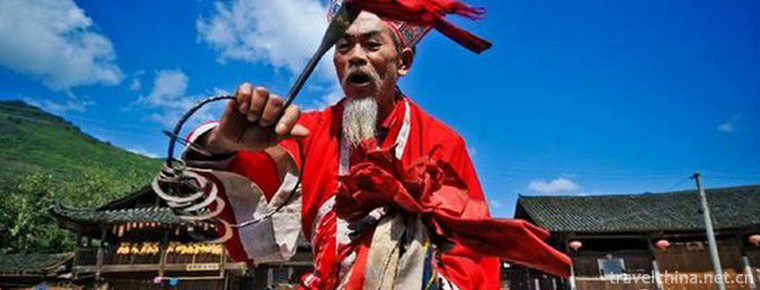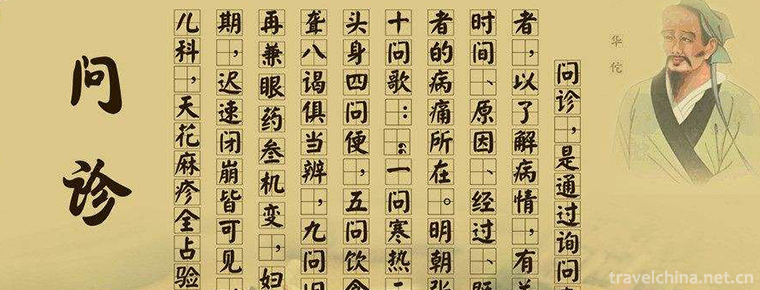Mongolian Long tune Folk Songs
Mongolian Long tune Folk Songs
Mongolian long-tune Mongolian is called "Uri Tudao", which means long song. It is characterized by fewer words, long-lasting, soothing and free, suitable for narration, and longer lyric. The lyrics are generally two sentences, the content of which is mostly describing grasslands, horses, camels, cattle and sheep, blue sky, white clouds, rivers, lakes and so on.
Mongolian long tune, with its distinctive nomadic cultural characteristics and unique singing form, tells Mongolian people's perception of history, culture, human customs, morality, philosophy and art, so it is called "the living fossil of grassland music". On November 25, 2005, UNESCO announced the third batch of "representative works of human oral and intangible heritage" at its headquarters in Paris. China and Mongolia jointly declared "Mongolian long-tune folk song" as the honorary list.
historical origin
Mongolian long-tune folk song is a unique singing form with distinct nomadic culture and regional cultural characteristics. It describes the Mongolian people's perception of history, culture, human customs, morality, philosophy and art in grassland people's unique language. Mongolian master of long-tune art La Surong introduced that in Mongolian, long-tune is called "Uri Tudao", meaning long song, which is relatively short song, besides long-term tune, there is also a long history. According to textual research, long-tune folk songs have existed during the formation of the Mongolian nationality, which has a history of thousands of years.
The long tone is a free translation of the Mongolian word "Uritingduo". "Uridin" means "long-term" and "eternal" and "Duo" means "song". In related works and papers, they are also literally translated into "Long Song", "Long Tune Song" or "Grassland Pastoral Song". "Mongolian long tune folk song" is a form of Mongolian folk song, Mongolian folk song is divided into long tune and short tune. During the formation of the Mongolian people, the long-tune folk songs already existed, and the lack of words and long tunes was one of their major characteristics. According to the historical origin of Mongolian music culture and the present situation of its musical form, the long tune can be defined as a folk song created by the nomadic people in the northern grassland in the production of animal husbandry and sung in the field grazing and traditional festivals. Generally, the two lyrics are upper and lower. The singers play the long tune lyrics according to the accumulation of life and the perception of nature, and the rhythm of the long tune lyrics is different. Most of them are about grasslands, horses, camels, cattle and sheep, blue sky, white clouds, rivers and lakes.
Long tune melody is long and soothing, artistic conception is open, voice is many words, breath is long, the melody is very decorative (such as front, back, sliding, echo, etc.), especially the Chinese-coloured singing method formed by the way of "Nogura" (Mongolian phonetic translation, twists or decorations) singing is the most distinctive.
At the same time, Mongolian long-tune folk songs are also a cross-border distribution of culture, China's Inner Mongolia Autonomous Region and Mongolia are the main cultural distribution areas of Mongolian long-tune folk songs. The success of the joint application between China and Mongolia is enough to show the immeasurable artistic and worldwide value of Mongolian long-tune folk songs as a cultural heritage.
On November 25, 2005, UNESCO announced the third batch of "representative works of oral and intangible heritage of mankind" at its headquarters in Paris. China declared "Uygur Mukam Art of Xinjiang, China" and "Mongolian Long-tune Folk Song" jointly declared by China and Mongolia ranked in the list. "Mongolian Long-tune Folk Song" is the first project jointly declared by China and foreign countries to UNESCO on the same intangible cultural heritage. During the formation of the Mongolian people, the long-tune folk songs already existed. Mongolian long-tune folk songs are closely related to grasslands and Mongolian nomadic life style. They carry the history of the Mongolian nation and represent the production, life and spiritual character of the Mongolian nation. Mongolian long-tune folk songs are also a cross-border distribution of culture. Inner Mongolia Autonomous Region of China and Mongolia are the main cultural districts of Mongolian long-tune folk songs.
Mongolian long-tune Mongolian is called "Uri Tudao", which means long song. It is characterized by fewer words, long-lasting, soothing and free, suitable for narration, and longer lyric. The lyrics are generally two sentences, the content of which is mostly describing grasslands, horses, camels, cattle and sheep, blue sky, white clouds, rivers, lakes and so on. Mongolian long tune, with its distinctive nomadic cultural characteristics and unique singing form, tells Mongolian people's perception of history, culture, human customs, morality, philosophy and art, so it is called "the living fossil of grassland music".
China and Mongolia have jointly declared "Mongolian long-tune folk songs" as "representative works of human oral and intangible heritage". In the next 10 years, the two countries will cooperate in the protection of Mongolian long-tune folk songs, coordinate and take protective measures to do better. Although China and Mongolia have done their best to protect it according to their own reality, and achieved some results, the overall decline trend of long-tune folk songs has not been fundamentally curbed. The partial, segmented or scattered protection of long-tune folk songs is far from being able to cope with the challenges and shocks they face. China has proposed to join forces with Mongolia to declare Mongolian long-tune folk songs as "representative works of human oral and intangible heritage". The Mongolian government responded positively to the suggestions of China. In nearly a year, China and Mongolia have carried out a series of communication, consultation, inspection and joint text production at different levels on the joint declaration. Finally, they have completed the heavy and tense declaration work within the time stipulated by the United Nations. Sun Jiazheng said that in the future, the two countries will conduct close and effective joint action in the field investigation, research, protection methods and protection measures of Mongolian long-tune folk songs.
In May 2006, Mongolian long-tune folk songs were included in the list of the first batch of intangible cultural heritage in China.
On October 24, 2007, China's first lunar orbiting satellite, Chang'e-1, carried more than 30 songs into space, one of which was the Mongolian long-tune folk song "Rich and Wide Alxa".
As early as more than a thousand years ago, the ancestors of the Mongolian people migrated to the Mongolian Plateau from the mountain forests on both sides of the Erguna River, and the mode of production changed from hunting to animal husbandry. The new folk song form of long tune came into being and developed. Over a long period of time, it gradually replaced well-structured hunting songs, occupied the leading position of Mongolian folk songs, and eventually formed the typical style of Mongolian music, and had a profound impact on other forms of Mongolian music. It can be said that the long tune embodies the characteristics and characteristics of Mongolian nomadic culture, and is associated with Mongolian language, literature, history, religion and psychology.
They are closely linked with world outlook, ecological outlook, outlook on life, customs and habits, and run through the whole history and social life of the Mongolian people. The basic themes of the long tune include pastoral songs, homesickness songs, hymns, wedding songs and banquet songs (also known as wine songs).
Mongolian long tune belongs to Mongolian music, and Mongolian music can be divided into three periods of historical development, namely, the period of mountain hunting music culture, the period of grassland nomadic music culture, and the period of Yinong Yimu music culture.
In the period of hunting music culture, its music style is represented by short tunes. Folk songs have the characteristics of short structure, concise tone, clear rhythm and few words. The overall music style is narrative and singing and dancing, and the lyricism is weak, which is also the common characteristic of human music art in primitive period. From the available data, we can see that some Mongolian folk songs with obvious musical and cultural characteristics of this period are still popular among the people, such as "Song of Chasing and Fighting Wisdom" and "White Sea Green Dance".
With the change of hunting production mode to nomadic production mode, the music style of the second period also changed from short-tune folk song to long-tune folk song, forming a period of nomadic music culture in Mongolian music history. From the point of view of musical morphology, this period not only retained and developed the short-tune music style of hunting period, but also gradually innovated and formed the long-tune music style. As far as the long-tune folk songs themselves are concerned, this period also experienced a long process of inheritance and development from simplicity to complexity and from low to high. Therefore, from the 7th century to the 17th century, the general trend of the development of Mongolian folk songs can be summarized as follows: based on short-tune folk songs, taking long-tune folk songs as innovation, long-tune folk songs gradually occupy the dominant position, and it is also an important historical period for the formation of Mongolian overall music and cultural style.
Around the 18th century (the middle and late Qing Dynasty), with the historical changes and development, the connection between the northern grasslands and the Central Plains has been further strengthened, and the pace of integration and exchanges among different ethnic groups has accelerated. Agricultural production in Central Plains also permeates some of the northern grasslands, and cultural exchanges are more frequent. Under such historical background, short-tune narrative songs and long-length rap and singing songs have been developed again, forming a period of Mongolian Yinong Yimu music culture. The characteristics of music style in this period can be summarized as follows: short-tune folk songs have been reborn and developed rapidly, long-tune folk songs have maintained more mature characteristics.
Inheritance Significance
The Chinese Association of Folk Literators and Artists officially named the New Balhu Zuo Banner as "the hometown of Mongolian long-tune folk songs in China" and "the cultural protection base of Mongolian long-tune folk songs in China". The New Left Banner Baerhu long tune folk song has distinctive features and is a wonderful flower of national culture and art. Over the past decades, many cultural celebrities, such as Tabuhai, Yunjid, Badama and Boeing Deligel, have gone from here to the whole country and won many awards and honors for their hometown. The new Left Banner folk song has a deep mass base, and almost everyone can sing Mongolian long tune. The original Balhu folk song of the new Left Banner has now broken through 300 key points.
The New Left Banner Committee and the Banner Government are making every effort to build the national cultural brand of Balhu. Since 2006, the "Boeing Deligel Cup" Mongolian long-tune folk song contest has been held every two years. To declare to the Ministry of Culture that the famous singer Boeing Deliger is the successor of Mongolian long tune, a national intangible cultural heritage. The banner also trains a new generation of inheritors by setting up long-tune classes, expanding and deepening the research field of long-tune through holding competitions and seminars, and actively creating an atmosphere conducive to the development of long-tune art inheritance. The banner has also independently planned and will publish "The Land of Mongolian Long-tune Folk Songs - The Record of Balhu Long-tune", and established a new Left-banner Long-tune Association. In the history of long-tune art, great masters of long-tune art emerge from generation to generation. In the 1950s and 1960s, Hazab, the king of a generation of singers, was famous at home and abroad for his "grassland Lyric tenor". His performance in the tenor area of "Little Yellow Horse" was very impressive. In 1955, Boeing Deliger, the "King of Long-tune Songs", won the gold medal at the World Youth Festival with a song "The Wide Grassland", and dumped world-class music masters and young people from all over the world. One of the judges, the famous former Soviet composer Shostakovich, called it "a rare folk soprano". In the late 1970s, Zhamusu, a rare folk singer in Ordos long tune, shocked the Beijing stage and caused a sensation and astonishment in the music theory circle, vocal music circle and education circle. Many experts happily praised "Grassland Bel canto", and he was invited to lecture at the Central Conservatory of Music, China's highest music academy. Shen Xiang, a famous vocal master, came to the scene to listen to his singing. In the early 1990s, Zamusu's singing voice in her 80s was still strong and scientific. This fully demonstrates that the long-tune singing art not only has its unique aesthetic essence and style, but also has its unique and scientific singing technology.
Mongolian long tune can be inherited through the singer's voice. Different people can sing the same works in different styles, so long tune often "adheres" to the inheritors. Nowadays, some famous long-tune singing artists and representatives of schools have passed away. Once the relationship between teachers and successors is not continued, the unique singing methods and methods are not inherited in time, which will inevitably endanger the protection and development of long-tune. With the successful declaration of Mongolian long-tune as "World Oral Cultural Heritage" by China and Mongolia, the art of long-tune will gradually receive further attention and protection. In the future, the two countries will conduct close and effective joint action in the field investigation, research, protection methods and protection measures of Mongolian long-tune folk songs. This is of great significance to enhance mutual understanding and friendship between the two peoples, cultural exchanges and cooperation between the two countries, especially for better protection of Mongolian long-tune folk songs.
The state attaches great importance to the protection of intangible cultural heritage. On May 20, 2006, Mongolian long-tune folk songs were approved by the State Council and included in the first batch of national intangible cultural heritage lists.

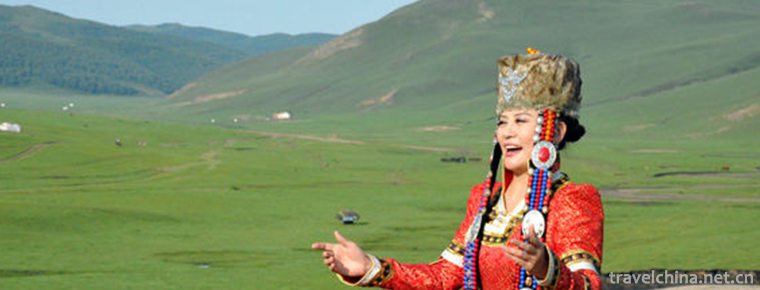
-
Dalian Jinshitan Scenic Area
Jinshitan is a national scenic spot, a national tourist resort, a national AAAAA scenic spot and a national geological park. It has been evaluated by CNN TV as one of the 40 most beautiful scenic spot.
Views: 177 Time 2018-12-04 -
Zhouzhuang Town
Zhouzhuang Ancient Town is a preferred site for world cultural heritage and the first batch of national 5A tourist attractions. It is located in the southeast of Suzhou City and at the junction of Kun.
Views: 327 Time 2018-12-06 -
Eight Immortals Crossing the Sea Scenic Area
Eight Immortals Crossing the Sea Scenic Area, also known as Eight Immortals Crossing the Sea and Eight Immortals Crossing the Haikou, is situated on the shore of the North Yellow Sea in Penglai City.
Views: 209 Time 2018-12-23 -
Legend of Dong Yong
Dong Yong's legend is the fifth largest love legend and the fifth largest folk legend in ancient China. It was first recorded in Liu Xiang's Biography of Filial Piety (Picture) in the Western Han Dyna.
Views: 107 Time 2019-04-27 -
GA Da Meilin
Gadamelin (1892 - April 5, 1931), Mongolian, surname Molettu (translated into Chinese as Meng), Nadamud, Han name Meng Qingshan, also known as Yexi, Mongolian legendary hero. Born in Zhelimu League.
Views: 83 Time 2019-04-30 -
Silk Strings of Laohekou
Laohekou Silk String is a traditional folk music in Xiangyang City, Hubei Province. Laohekou Silk String is different from other forms of folk literature and art. It is a music that combines folk arti.
Views: 289 Time 2019-05-11 -
Timago of Tujia Nationality
The Tujia Tima song, also known as the "Tujia Tima Goddess Song", is an ancient song sung in Tujia language in the activities of Tujia Tima. It mainly distributes in Longshan, Yongshun, Baoj.
Views: 278 Time 2019-06-23 -
The game of go
Go is a strategic two-player game. It was called "game" in ancient China and "Go" in the West. Popular in East Asian countries (China, Japan, Korea, Korea), is one of the four arts.
Views: 283 Time 2019-06-26 -
Diagnosis of Traditional Chinese Medicine
Diagnosis of traditional Chinese medicine, one of the traditional Chinese medicine, is declared by the Chinese Academy of Traditional Chinese Medicine, one of the national intangible cultural heritage.
Views: 325 Time 2019-08-10 -
Chinese Cheongsam QiPao start time
When it comes to the beginning of cheongsam fashion, it is generally believed that in the period of the Republic of China in the 20th century, Mr. Zheng Yimei said that "the original women wore short clothes in the Qing Dynasty, but did not wear .
Views: 363 Time 2020-12-11 -
Revenue and expenditure of Mianyang
In 2019, Mianyang's general public budget revenue will reach 13.115 billion yuan, an increase of 5.3%; general public budget expenditure will reach 45.334 billion yuan, an increase of 11.1%. The balance of RMB deposits in financial institutions was.
Views: 177 Time 2020-12-14 -
Leshan landform
Leshan City is located in the transition zone from Sichuan basin to southwest mountainous area. The overall trend is high in Southwest China and low in Northeast China. The highest point is the main peak of Ma'anshan in Ebian Yi Autonomous County, with an altitude .
Views: 366 Time 2020-12-17
